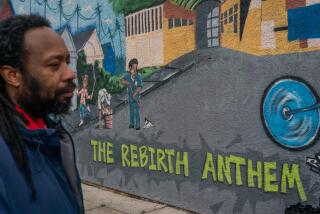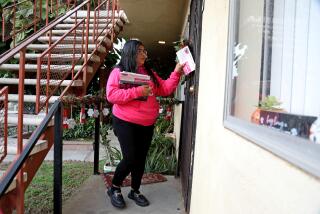How Do I . . . Set Up a Neighborhood Watch Program?
- Share via
The Neighborhood Watch Program began in the late 1960s under Police Chief Ed Davis. The community-based policing program encourages neighbors to work together to help prevent crime. This information was compiled by Mary Helen Berg from interviews with transportation and Police Department officials .
Q: How do I set up a local Neighborhood Watch?
A: Organize your neighbors first. Then contact police and ask a community relations officer to help set up a meeting between neighbors and police.
Q: How many neighbors are needed to form a watch group?
A: As many as possible but any individual can request that a Neighborhood Watch sign be posted. Watch groups may consist of a few neighbors or a 34-block area as in one Hollywood community.
Q: If my neighborhood forms a watch group, will the police be more active in my community?
A: A police representative will attend your monthly meetings, help analyze problems and make recommendations on how the community can address them. But forming a watch group does not mean the police will patrol more frequently.
Q: What does the Neighborhood Watch program cost to operate?
A: Neighborhood Watch does not have a separate budget within the Police Department but, with about 144 officers involved, more than $1 million in salary time is spent on the program.
Q: Where do I get Neighborhood Watch signs?
A: Apply for the signs through the Department of Transportation. You can obtain an application through your local police or by calling the Regulation Analysis Section of the Department of Transportation, (213) 913-4620.
Q: Is the application complicated?
A: No, but it requires several steps for approval. First, have it signed by your Police Department commander. Send the signed application to the Bureau of Street Lighting. That department will determine if the signs may be attached to street
light poles and will forward its recommendations to the Department of Transportation. Transportation officials must approve sign locations and will bill your community organization for installation.
Q: Who pays for the signs? What do they cost?
A: Communities requesting signs must submit payment before the city will post them. The 18-by-12-inch signs on street light posts cost $23; signs that require their own post cost $54.
Q: How many watch groups exist in the city?
A: Last year more than 5,000 watch group meetings were held.
Q: Who is that foreboding figure on the Neighborhood Watch signs?
A: That’s Boris the Burglar, developed by Chief Davis as an icon for the program.
More to Read
Sign up for Essential California
The most important California stories and recommendations in your inbox every morning.
You may occasionally receive promotional content from the Los Angeles Times.













